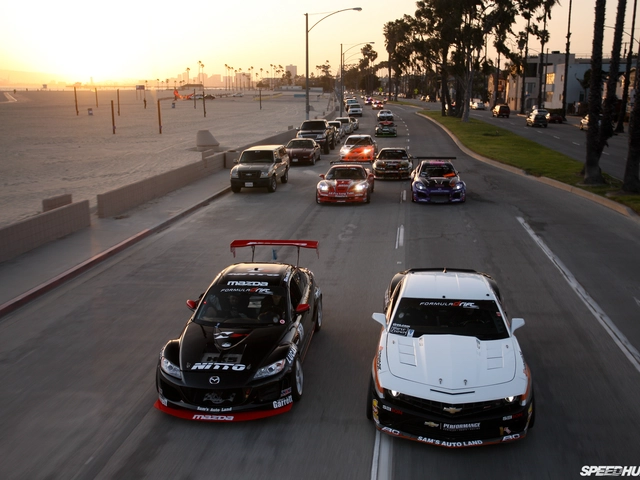Is automotive racing as dangerous as everyone thinks?

Debunking the Myths of Automotive Racing Danger
As a fan of automotive racing, I've often heard people talking about how dangerous it is. But is it really as dangerous as everyone thinks? In this article, we'll explore the safety measures taken to protect drivers and spectators, and discuss the statistical data on racing accidents. We'll also look at the advancements in racing technology and how they've improved safety over the years.
Understanding the Risks of Automotive Racing
First and foremost, it's important to acknowledge that there are risks involved in automotive racing, just as there are in any other sport. High speeds, close proximity to other cars, and the potential for mechanical failures all contribute to the risk of accidents. However, the danger in automotive racing has been significantly reduced over the years thanks to safety regulations and advancements in technology. While accidents can still happen, they are much less likely to result in severe injury or death than in the past.
It's also crucial to differentiate between professional racing and illegal street racing. Professional racing events have stringent safety measures in place, while street racing is extremely dangerous and illegal. This article focuses on the risks and safety measures of professional automotive racing.
Rigorous Safety Standards and Regulations
One of the reasons automotive racing has become safer over time is due to the implementation of strict safety standards and regulations. Governing bodies such as the FIA (Federation Internationale de l'Automobile) have implemented numerous safety measures to protect both drivers and spectators. These include the use of helmets, fire-resistant suits, roll cages, and crash barriers, among other things.
Additionally, professional racing circuits are designed to minimize the risk of high-speed crashes and collisions. Track layouts are constantly being reviewed and updated to ensure that they provide the safest possible environment for racers. These efforts have contributed to a substantial reduction in the number of accidents and fatalities in motor racing over the past few decades.
Technological Advancements in Racing Safety
Technology has played a major role in improving safety in automotive racing. Cars have become much more resilient, featuring a range of safety features such as energy-absorbing crash structures, reinforced cockpits, and advanced braking systems. These innovations have made it much more likely that drivers will walk away from an accident without serious injury.
Furthermore, racing teams and manufacturers are constantly striving to improve the safety of their vehicles through research and development. As a result, we can expect to see even more advancements in racing safety as technology continues to evolve.
Accident Statistics in Professional Automotive Racing
When considering the danger of automotive racing, it's important to look at the data. While accidents do occur, the number of serious injuries and fatalities is relatively low, especially when compared to other sports. According to the FIA, there were 55 fatalities in FIA-sanctioned events between 2000 and 2019, with many of these occurring in lower-tier competitions. This is a small number compared to the thousands of races that take place each year.
It's also important to consider the risks faced by spectators. While there have been tragic incidents involving fans in the past, these incidents are extremely rare, and safety measures have been put in place to minimize the likelihood of such occurrences in the future.
Comparing Automotive Racing to Other Sports
When comparing the dangers of automotive racing to other sports, it's important to remember that risk is inherent in any physical activity. Contact sports such as American football and hockey, for example, have a much higher rate of injury than automotive racing. Additionally, sports like mountain climbing and skydiving present their own unique set of risks.
While automotive racing does carry some risk, it's important to remember that the participants are professionals who have undergone extensive training and are competing in a highly controlled environment. This makes it a relatively safe sport when compared to other high-risk activities.
Conclusion: Is Automotive Racing as Dangerous as Everyone Thinks?
In conclusion, while there are risks involved in automotive racing, it is not as dangerous as many people believe. The strict safety regulations, technological advancements, and controlled environment of professional racing all contribute to a relatively safe sport, especially when compared to other high-risk activities. However, it's crucial to remember that illegal street racing is extremely dangerous and should not be compared to professional automotive racing. By understanding the risks and safety measures in place, we can enjoy this thrilling sport while appreciating the efforts made to protect the drivers and spectators involved.





